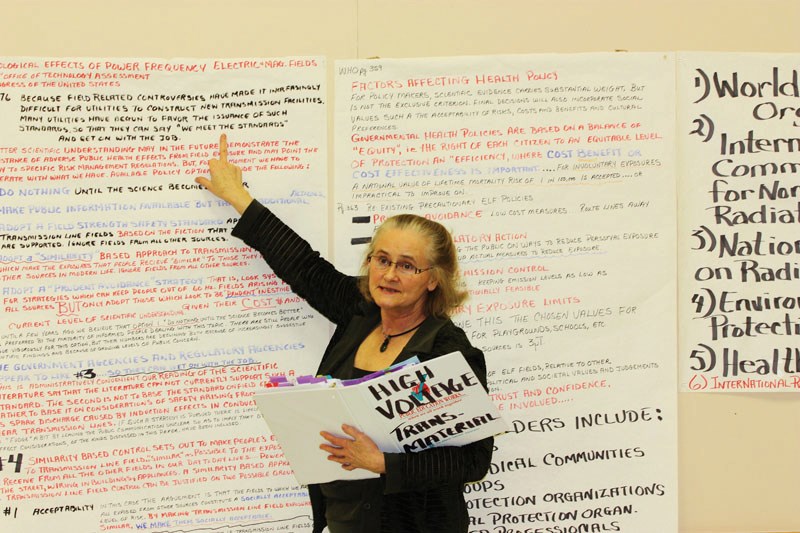Marie Ilchuk just wants people to wake up and pay attention to what's going on.
She is very concerned with ATCO's proposed transmission lines that would be erected through the MD of Bonnyville.
Along with fellow concerned citizen Pat Valentine, Ilchuk hosted a meeting at LaCorey's Willow Prairie Hall this past Saturday night to present research and discuss the implications of the proposed transmission lines, from health effects to cost.
They have started a petition to try to force ATCO to put transmission lines underground when they come within 600 metres of residences. They are proposing an underground route that goes west from the Bonnyville substation.
"So no one's health is affected," explained Ilchuk.
The route would then go above ground north through Crown land and to the Bourque substation. She said it would mean an extra 12 miles of transmission lines.
Residents who are affected by the proposed transmission line routes are able to sign the petition, which Ilchuk wants to bring to the Alberta legislature.
At the meeting, Fred Karas spoke to the group of about 20 people about a transmission line put over his property where he lived for 17 years.
"I was against this line," he said, but felt forced to sign an agreement because going through arbitration and hiring a lawyer would have cost him significant money.
Karas was diagnosed last year with a type of blood cancer that his doctors say comes from chemical or radiation exposure.
He said he is "living proof of what power lines can do."
Ilchuk discussed policy options outlined in the 1989 paper, "Biological Effects of Power Frequency Electric and Magnetic Fields," presented to the Office of Technology Assessment of the United States Congress.
She argued government agencies that people expect to protect them such as WHO and Health Canada, use these policy options to deal with the public.
One of these options states, "Adopt a field strength safety standard approach to transmission line fields based on the fiction that the numbers are supported by a review of the science. Ignore fields from all other sources."
Another option states, "Adopt a 'similarity' based approach to transmission line fields which makes the exposures that people receive to these fields 'similar' to those they receive from other sources in modern life. Ignore fields from all other sources."
"This is horrifying as far as I'm concerned," said Ilchuk, speaking about her research during the presentation.
She has also come across a WHO document that analyzes factors in considering both benefits and costs of policy options such as doing nothing, research, communication, mitigation and national standards.
"This just makes us collateral damage. It's a risk assessment value they are using that is cost; cost only," said Ilchuk. "Certain risks and certain deaths are considered acceptable."
Valentine presented studies from Responsible Electricity Transmission for Albertans, an organization that advocates for high voltage transmission lines to be buried if they are built near people or environmentally sensitive areas.
The studies suggest links between transmission lines and a variety of adverse health effects such as leukemia and brain tumours.
She also reminded people how all Albertans share the cost for transmission lines. She said power costs could multiply four and a half times in seven years.
She said she spoke with an Alberta Electric System Operator representative and asked if they were creating a global system of power lines. She said his reaction implied they were.
"(I) feel like we are being violated" like we have never have been before, said Valentine.
She also expressed concern over how children could be prevented from climbing the towers and the "eyesore" that the towers would be.
She said she has heard different explanations of whether a transmission tower would catch fire if it fell.
"They're not indestructible," she said, noting a 1987 storm in Edmonton knocked over numerous power lines.
"There is no pilot in the cockpit," said Ilchuk after the meeting. "We are on a huge jet and there is no pilot. We have to do it ourselves or we are hooped."



